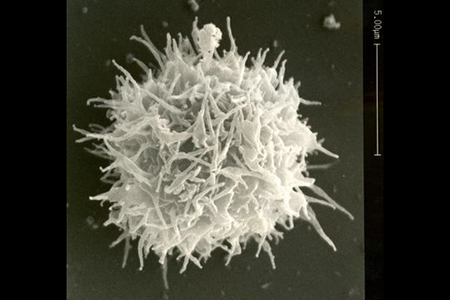Acanthamoeba castellanii. Image credit: Katz Lab, Flickr (https://eol.org/pages/491172/media)
Protozoa are single-celled organisms that feed mainly on bacteria, but may also eat other protozoa, soluble organic matter, and some fungi. Protozoa play various roles in the soil ecosystem: nutrient mineralization (making them available to be used by plants and other soil organisms), regulation of bacterial populations (by eating them), disease suppression (by competing with or feeding on pathogens), and finally as a food source for other soil organisms. Protozoa are classified into three groups based on their shape: 1) ciliates, the largest protozoa, that move by means of hair-like cilia; 2) amoebae, that move by means of a temporary foot or “pseudopod”; and 3) flagellates, the smallest of the protozoa, that use a few whip-like flagella to move.

Diversity in soil: 600-4,800 per gram
Abundance in soil: 104-107 per m2
Classification: Microorganisms